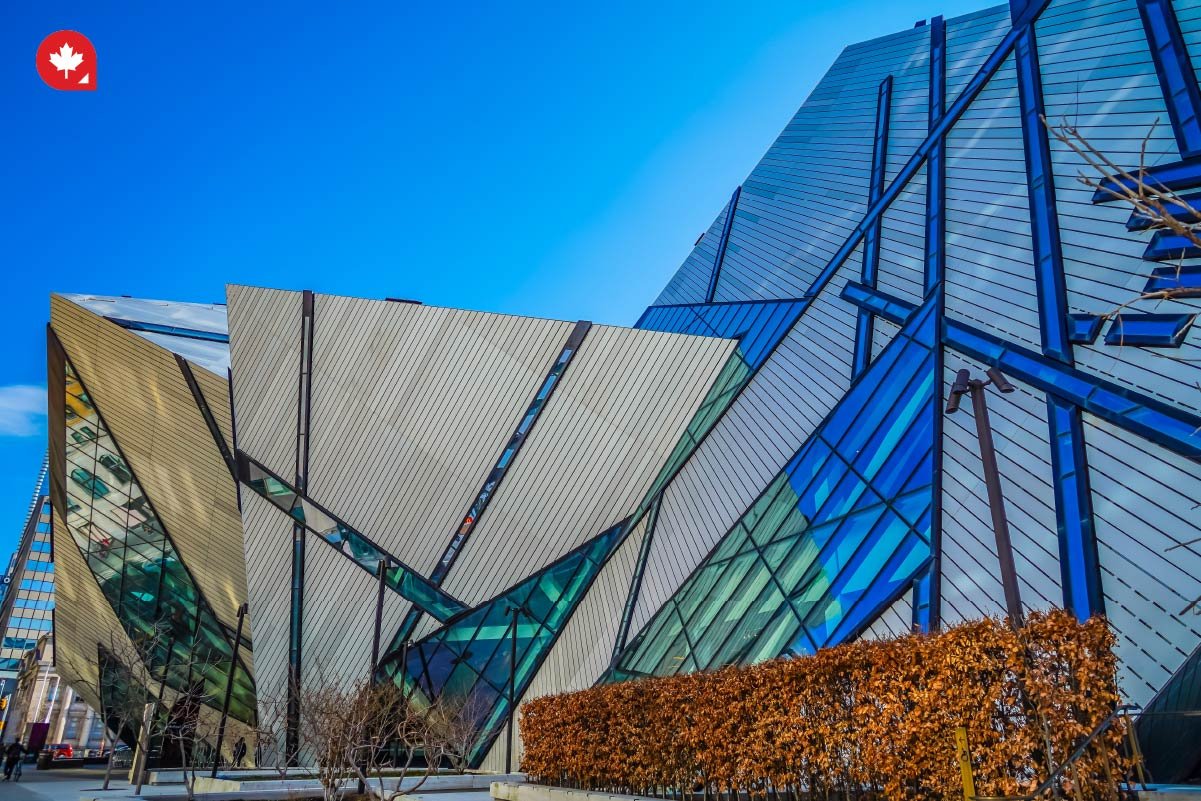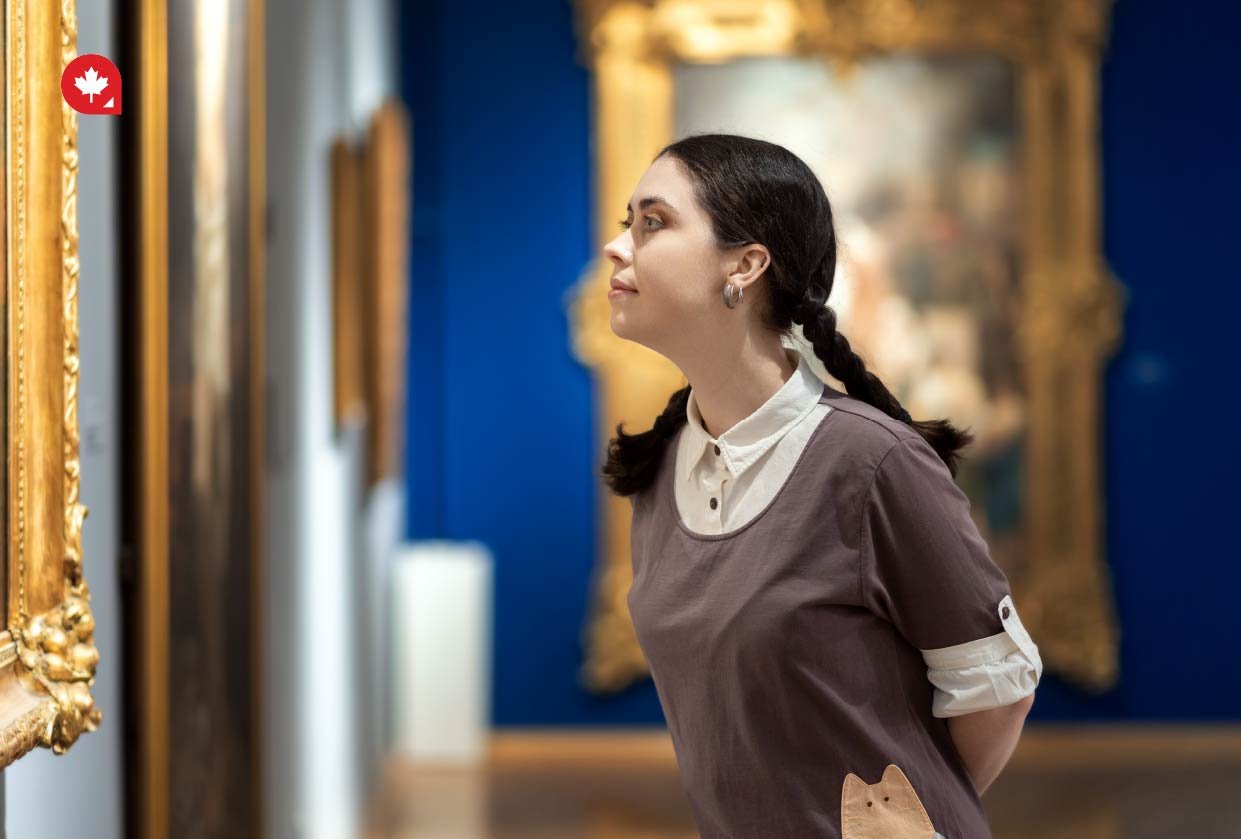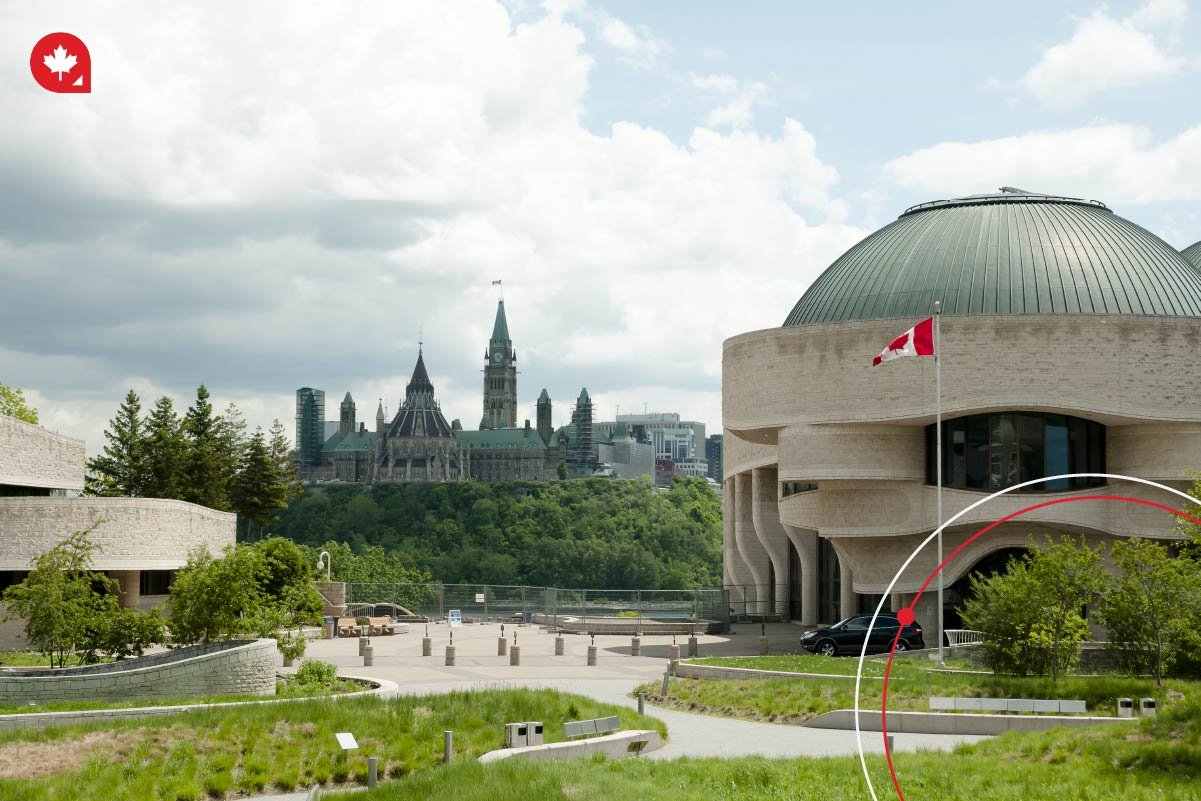Canadian museums house the nation's cultural richness, offering a captivating glimpse into its history, diverse cultures, and awe-inspiring natural world. As a newcomer to Canada, the country's museums offer diverse experiences, such as witnessing the footsteps of dinosaurs in Toronto's halls to the distinct artistry of First Nations masterpieces in Vancouver's galleries.
If you're a history buff, you'll be captivated by stories of human rights struggles in Winnipeg. At the same time, if you're an art lover, you'll be fascinated by the beauty of European masterpieces showcased in Ottawa. No matter your area of interest, a personal museum experience awaits you in Canada.
Are you ready to discover the top museums in Canada? Then, have a look as we uncover the diverse and captivating top museums across Canada.
What are the Top 10 Museums in Canada That You Should Visit?

Canada boasts diverse museums showcasing its rich history, culture, and art. Below are the top museums in Canada you may consider visiting.
Royal Ontario Museum, Toronto
A Toronto cultural landmark, the Royal Ontario Museum (ROM) boasts a staggering collection exceeding six million objects. Explore captivating exhibits featuring dinosaur skeletons, artifacts from ancient Egypt, minerals, contemporary art, and more. This museum is a testament to the vast breadth of human history and natural wonders.
Canadian Museum of History, Gatineau
As Canada's largest museum, the Canadian Museum of History (CMH) is an institution that houses over four million artifacts illuminating the country's story. Permanent exhibitions delve into the captivating traditions of First Nations peoples, European encounters, immigration and settlement, and Canada's role in international affairs. This museum is a must-visit for history buffs seeking a comprehensive understanding of Canada's journey.
Art Gallery of Ontario, Toronto
Established in 1876, the Art Gallery of Ontario (AGO) is one of the largest art museums in Canada. Its collection includes over 95,000 works of art, spanning a vast range of cultures and eras. Marvel at European masterpieces, be captivated by contemporary installations, and delve into the evolution of artistic expression in Canada through their renowned collection of Canadian art.
Museum of Anthropology, Vancouver
Begun in 1947, the Museum of Anthropology museum at the University of British Columbia houses a world-renowned collection of anthropological artifacts. Explore exhibits showcasing masks, totem poles, and other artistic expressions from various Indigenous cultures worldwide. The museum focuses on the art and cultural heritage of First Nations peoples of the Pacific Northwest Coast, offering a unique window into their traditions.
The Rooms, St. John's
The Rooms in St. John is a provincial museum complex that comprehensively examines Newfoundland and Labrador's unique history and culture. Permanent galleries in The Room explore the Atlantic province's:
- Geology,
- Indigenous heritage,
- European settlement,
- Fishing industry and
- Artistic traditions.
As a visitor you can also explore the fascinating temporary exhibitions on various themes.
Royal BC Museum, Victoria
Located in Victoria, British Columbia's capital city, the Royal BC Museum explores the natural and human history of the province. Permanent exhibits showcase the province's diverse ecosystems, including rainforests, mountains, and coastal regions. Get a look into the rich cultures of Indigenous peoples and delve into the history of European colonization. Fascinating displays on maritime history and the fur trade offer further insights into British Columbia's past.
Montreal Museum of Fine Arts
Founded in 1860, the Montreal Museum of Fine Arts (MMFA) is Canada's oldest and largest fine arts museum. Its collection includes over 45,000 works of art, spanning various cultures and eras, from ancient civilizations to contemporary masters. Explore European masterpieces, delve into decorative arts, and be captivated by international and Quebec art.
Canadian Museum for Human Rights, Winnipeg
The Canadian Museum for Human Rights is a unique and thought-provoking institution dedicated to exploring human rights. Permanent galleries explore the history and ongoing struggles for human rights worldwide, focusing on Canada's contributions. Interactive exhibits and educational programs encourage critical thinking and dialogue about this vital topic. The museum serves as a powerful reminder of the importance of human rights in building a just and equitable society.
Glenbow Museum, Calgary
The Glenbow Museum in Calgary offers a complex and vast collection of over one million artifacts that tell the story of western Canada. Explore exhibits on Indigenous cultures, natural history, military history, and the development of western Canada. The Glenbow Museum also houses a significant collection of First Nations art and artifacts, offering a window into the region's rich cultural heritage.
National Gallery of Canada, Ottawa
Established in 1880, the National Gallery of Canada (NGC) is Canada's premier museum of visual arts, with a collection exceeding 40,000 works of art. Explore various Canadian and international art, from renowned European masters to contemporary Canadian artists. The NGC is particularly known for its impressive collection of Canadian art, showcasing the evolution of artistic expression in the country.
What Can I Do as a Newcomer to Canada While Visiting Its Top Museums?

Among the things to do in Canada as a newcomer, its museums offer an enriching experience beyond simply admiring artifacts. Below are some things to do in Canada to make the most of your visit to the country's top museums.
Dive Deeper With Tech
Many Canadian museums use interactive exhibits to enhance your understanding. Touch screens, augmented reality experiences, and multimedia displays bring history and art to life. Explore virtual reality exhibitions or participate in digital games that test your knowledge.
Hands-On Activities
Several museums cater to families with engaging activities for children. Look for designated areas with puzzles, dress-up clothes, or craft stations that allow children to connect with the exhibits in a fun and interactive way.
Guided Tours
Most Canadian museums offer guided tours led by knowledgeable staff. These tours provide in-depth insights into the collections and highlight hidden gems you might miss. Consider thematic tours focusing on specific periods, artistic movements, or cultural aspects.
Curator Talks and Lectures
Many Canadian museums host regular talks and lectures by curators or guest speakers. These sessions delve deeper into specific exhibits or themes, offering a unique opportunity to learn from experts in the field.
Behind-the-Scenes Tours
Some museums offer exclusive behind-the-scenes tours that glimpse the world beyond the exhibition halls. Explore conservation labs, storage facilities, or curatorial offices, which offer a fascinating way to understand the museums' operations.
Art-Making Workshops
Several museums organize art-making workshops inspired by their collections. Participate in workshops led by professional artists and learn new techniques while being inspired by art on display.
How Can I Visit Canada's Top Museums?

Canada's museums offer enriching experiences, but entry requirements are crucial for international visitors. Here's a breakdown of relevant visas you can apply for to visit Canada.
Canada Visitor Visa
The Canada Visitor Visa, also known as the Tourist Visa, is the most common option for tourists visiting Canada for leisure purposes. A Canada Visitor Visa will enable you to visit Canada for short-term stays in Canada, typically up to six months. Processing times can vary, so apply well before your trip.
Learn everything you need to know about Canada's Tourist Visa.
IEC Working Holiday Visa
For young adults, typically 18-35 years old, from select countries, the International Experience Canada (IEC) Working Holiday Visa program offers working holiday visas. These visas allow temporary stays, usually 12-24 months, with the possibility of working to support your travels.
Find out why you should go on a working holiday in Canada.
Business Visitor Visa
If your primary purpose involves professional meetings related to Canadian museum conferences or research collaborations, consider applying for a Business Visitor Visa. This visa allows you to have temporary stays for business activities not involving paid employment within Canada.
FAQs
Do I Need Travel Insurance for My Trip to Canada?
While not mandatory for a Canada Visitor Visa, it is highly recommended to have travel insurance that covers medical expenses, trip cancellations, and other unforeseen events during your stay in Canada.
What Should I do if my Canada Visitor Visa Application is Refused?
If your application is refused, the refusal letter will explain the decision. You can reapply if your circumstances change or if you can address the reasons for the refusal. You may appeal the decision depending on the circumstances.
Can I Work or Study with a Canada Visitor Visa?
No, a Canada Visitor Visa does not permit you to work or study in Canada. If you wish to work or study, you must apply for the appropriate work or study permit before engaging in those activities.
How Long Does it Take to Process a Visitor Visa Application?
Processing times vary depending on the country and time of year. It is advisable to apply well in advance of your planned travel date. Generally, processing can take a few weeks to a few months.
Learn more about IRCC processing times.




